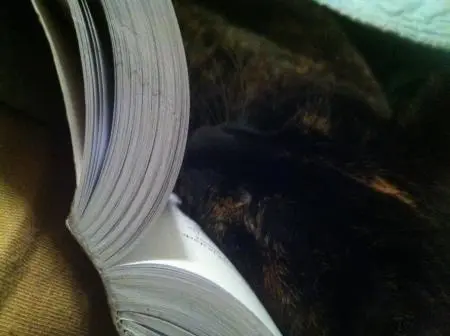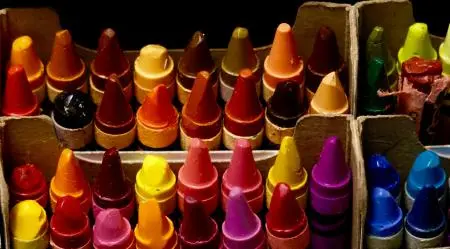It's that time again. The time of year when we all decide to get in shape, stop being jerks, and start a new reading list.
That means finding a gym, finding a path to inner peace, and finding a reading list.
And for most of us, that means abandoning the gym after a few weeks, deciding it's better to be an asshole (more fun, too), and forgetting entirely about that reading list.
I'm not here to tell you to exercise, and I'm not here to tell you to stop being a jerk. I'm here to talk to you about reading lists, though. I'm here to tell you that it's time to stop finding reading lists and that it's time you made your own, that building your own reading challenge is the key to happiness and fulfillment that will last throughout your year of reading.
Why Bother?
You're right to ask this question. There are TONS of reading lists out there. Why re-create the wheel?
Because one wheel doesn't work on every car. The wheel needs to be re-created once in a while.
Most reading lists have problems. The difficulty is off, the challenges aren't exciting, and it all comes down to the same thing: It's not yours. Some other joker made this, not you. This reading list doesn't reflect your interests. It doesn't reflect your weaknesses. It's just a list that someone out there put together in order to have a thing to write on the internet, not because they care about what your reading experience will feel like over the next year.
Having something so impersonal, it's like taking a checklist for intercourse from the internet and applying it in real life. "Step 1: Indicate to your partner that you are aroused, either verbally or through non-verbal cues, such as putting on the Beetlejuice soundtrack." It's boring AND gross. Don't be boring AND gross.
Get out a sheet of paper. Right now. Let's do this together.
Stop consuming and start creating.
Step 1: Handwritten And Handmade
I really recommend going the handwritten route. Write out your reading challenge by hand. Add illustrations. Color if you want. Add stickers. Make folds. Orient things however you like on the page. Make this list a living, personal thing, something that's special to you.
You'll connect with this list if it's written out. And as the year passes, you'll see the list age and crinkle. It'll become something of a marker of a specific year, a tangible artifact of your year of reading in a way a digital list just can't replicate.
Step 2: Get Away From Numbers
I dislike numerical challenges like "Read X Books This Year." If you get behind, you give up. There's no reason to go on. You get so overwhelmed by how much you suck that you give up entirely.
AND, when you have a numerical reading challenge, then you're not incentivized to read longer books, even if something catches your eye.
Let's get away from numbers. Instead, let's talk challenges.
Step 3: Challenges
My advice is that you create a list of challenges for yourself and then fill in those challenges with self-selected titles throughout the year.
For one thing, it gets you away from titles you picked early in the year. Why limit yourself to books you were excited to read in January of 2017? Leave room for something new.
For another, challenges can act as prompts that help you out of a reading rut.
And to speak to flexibility, create your challenges and then give yourself the option of calling it a win if you complete 75% of those challenges. Or 25%. Or whatever number of challenges you think will feel like a win. That way, you don't have to do absolutely everything.
What sorts of challenges should you set? Read on!
Step 4: Diversity And Even More Diversity
Reading books with diverse authors, characters and settings is something that many reading lists will challenge you to do. And this is a good thing. For a lot of reasons. But the way I've gone about it isn't working, and I'll share the problem I've created for myself. If these challenges don't cause this problem for you, then feel free to ignore.
In the past I've tried lists with challenges like "Read a book by someone who identifies as LGBTQ+" or "Read a book that takes place in Asia." What ends up happening most of the time is that I complete these challenges by reading only books labeled as literary fiction. That's my tendency, my pattern. And when I see a pattern, I want to SMASH it. Building my own challenge allows me to do so.
Horror novels by people of color? Yes, please.
What's happening in the world of Chinese romance? Let's find out!
LGBTQ+ comics artists? Let's do this!
When it comes to building your list, take a look at the potential for diversity and see if there's a pattern there. Look at what you're reading to fulfill your challenges. Then, if there is a pattern, disrupt that pattern.
Step 4: When Traditional Genres Aren't Enough
Genres are another staple of reading lists. Maybe traditional genres are too prescriptive for you. Maybe something like "Read a Horror Novel" doesn't quite cut it.
I have a theory about this, and it's that we confuse a book's genre with the effect it's meant to have on a reader. Who's to say what horror does to you? It may not be the same thing that it does to someone else.
If that sounds like you, replace genre challenges with something else. For example, you could replace genre challenges with challenges regarding the emotions a book is meant to evoke in a reader.
Read a book that you've purposely avoided out of fear.
Read a book that makes you feel uncomfortable.
To speak to the above diversity piece, Read a novel that takes place in China and has a character you're likely to fall in love with.
Step 5: The How
We don't just read books. We have experiences with books. Think about it. You've probably heard someone start to tell you about a book they read, but the synopsis veers off into a story about an experience. "Oh yeah, I read that. I read it in one weekend. I was visiting home for the holidays, and I was in my old bedroom. It was so weird because..."
When you build your challenge, build in the opportunity for experiences too.
Listen to an audiobook at minimum 2X speed.
Read a book entirely outdoors.
Step 6: Consumption
Reading is consumption. It's always a good idea to consider how you're consuming what you read. Where your money is going. What your role in the marketplace is.
Buy an eBook that costs less than $1.99.
Buy a book directly from an indie press.
Read something out-of-print.
Step 7: Serendipity
Building in some chance is a great way to keep your reading list lively over the year. It's a whole year! Give yourself the chance to be surprised.
When your reading list is overly structured, you'll find yourself slogging through. When there's some built-in surprise, you'll have some options to break out of a reader's block.
Go to the library and pick a book off the shelf. One you've never heard of before.
Roll some dice, virtual or analog, add up the numbers and read whichever book is in that position on a bestseller list (or reading list of your choice).
Choose between three or more books by placing them on the floor and allowing your pet to choose. (Okay, you got me. I just wanted to put in a picture of my kitty.)

Step 8: Get Personal
One of the best ways to make sure your reading list doesn't look like anyone else's is to make the titles personal.
Ask your best friend what their favorite book is and read it.
Find out one of your favorite authors' favorite books and read it.
Ask someone who knows you well to pick your next book.
Step 9: Spread The Love
If you're someone who cares enough about books and reading to create an elaborate reading list, then you're someone who has strong feelings about books and reading. Why not add some challenges to your reading list that aren't necessarily about reading?
Why not contribute to a crowdfunding campaign to get a book published?
Why not do something free like tweeting about five books you loved this year?
Why not write a 5-star review of a book you really like this year, whether you read that book this year or not?
Step 10: The Grab Bag
Listed below are a couple dozen ideas for your reading list, including some of the ones listed in the categories above and variations on those ideas. Feel free to use all of these or some of them or none of them, but I hope that they get you thinking about how you might build your own reading list this year.
- Pick a book you're only allowed to read on days when the high temperature goes above 95-degrees.
- Read something you'd normally be embarrassed by in public.
- Read something only while you're in motion.
- Find the The Room of books.
- Speed read by only reading the first 50 pages and then the last 50 pages.
- Read something by an author who died last year.
- Read something by an author who was born the same year you were.
- Read a book in less than 24 hours.
- Read only the first half of a book. Never finish it.
- Choose between three or more books by placing them on the floor and allowing your pet to choose.
- Select a book to re-read every 5 years.
- Ask someone who knows you well to pick your next book.
- Read a book with a repulsive cover.
- Read a book everyone but you seems to have read in high school.
- Read erotica set in another country.
- Roll some dice, virtual or analog, add up the numbers and read whichever book is in that position on a bestseller list (or reading list of your choice).
- Read a horror novel that was originally published in another language.
- Read a comic book with art by a black artist.
- Read a book that you've purposely avoided out of fear.
- Read a book that makes you feel uncomfortable.
- Listen to an audiobook at minimum 2X speed.
- Read a book that describes a sexual experience you've never had.
- Read a book entirely outdoors.
- Buy an eBook that costs less than $1.99.
- Buy a book directly from an indie press.
- Read something out-of-print.
- Go to the library and pick a book off the shelf. One you've never heard of before.
- Contribute to a crowdfunding campaign to get a book published.
- Tweet about 3 of your favorite books this year.
- 5-star review a favorite book.
- Read a comic from a publisher with a CEO that identifies as LGBTQ+
As with any sort of list, there's a ton of stuff I've missed. Comment below. What would you add? What have you done in the past that you liked? What didn't work for you?

About the author
Peter Derk lives, writes, and works in Colorado. Buy him a drink and he'll talk books all day. Buy him two and he'll be happy to tell you about the horrors of being responsible for a public restroom.








